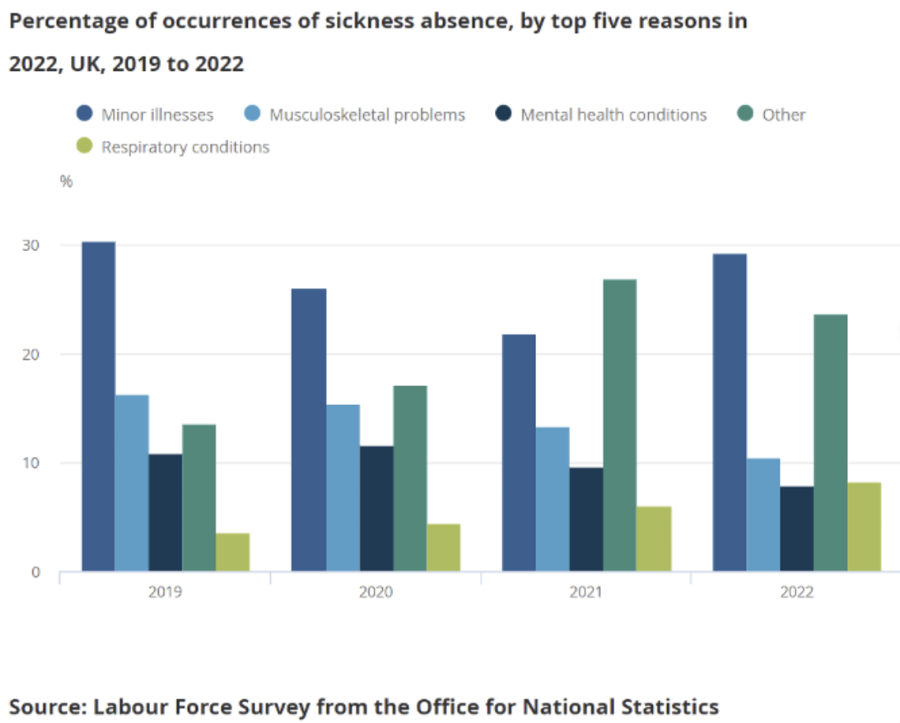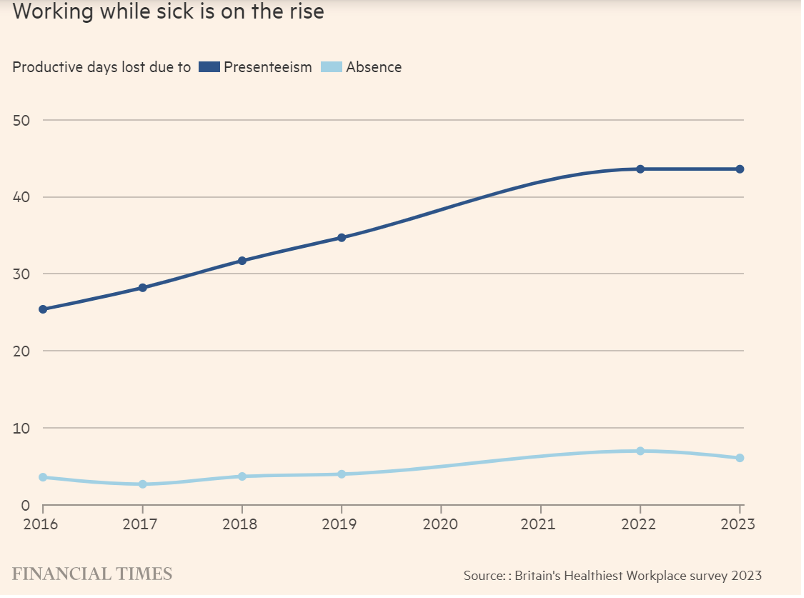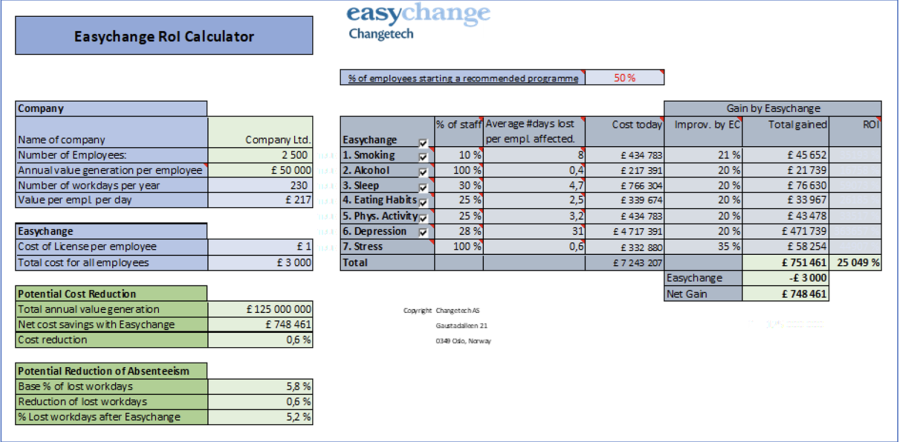Easychange provides a fully automated health & wellness solution for employers providing benefit to employees, reducing sickness absence and improving productivity.

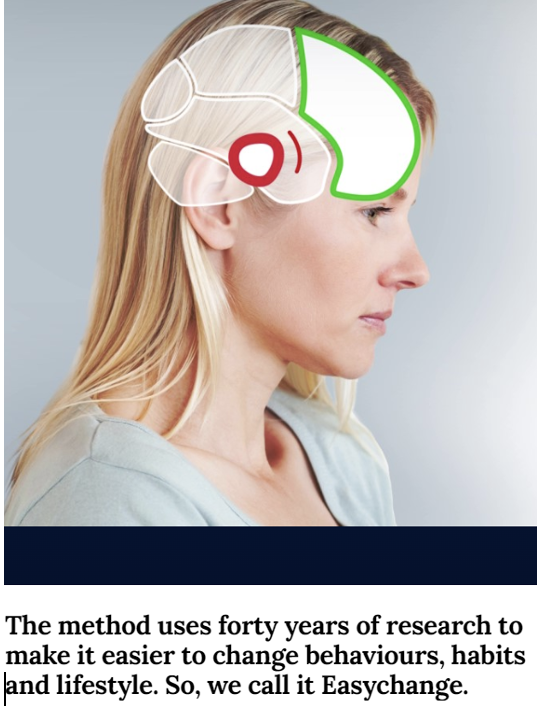
This Easychange case study explains how a fully automated ‘app’ can be adopted by employers to provide a solution which benefits the employer and employee utilising no more than 4G/5G mobile device connectivity. The app, selected through a fully competitive process, has excellent user feedback but more importantly, is evidenced through a full set of randomised clinical trials (RCTs). Employees improve their health and the offering is seen as a benefit provided by the employer. Employers benefit from reduced sickness absence and achieve a full ROI through consequent productivity gains.
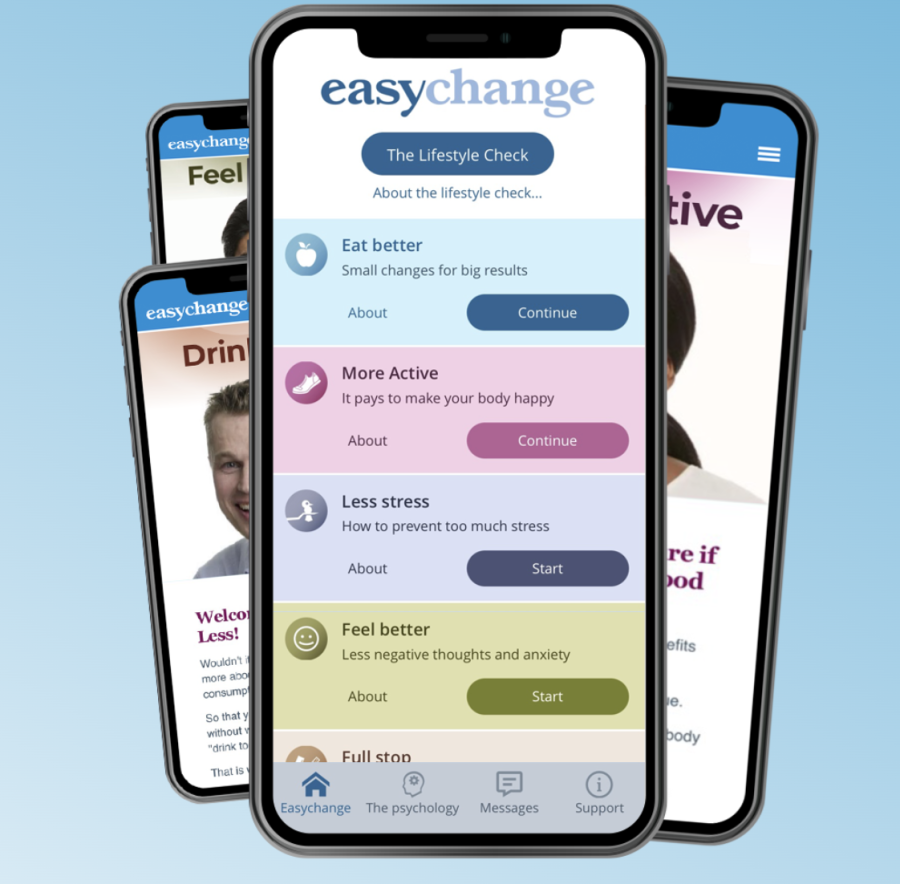
Over 70% of health budgets are spent on diseases caused by our behaviour
What is the problem to be solved?
This case study is relevant to any employer and to any health system attempting to tackle the preventative agenda, reducing pressure on healthcare services by helping people manage their lifestyle better.
From an employer perspective we know that poor health impacts productivity and economic performance. In the UK productivity has been dropping steadily since 2014, with businesses losing over a month each year per employee. Usually this is because your employees are at work but not actually being productive (Source, Vitality employer surveys 2023):
- In 2023, employees lost 20% of working hours
- This represents a loss of 49.7 productive days per employee, per year
- Younger workers show poorest figures
What is the solution to the problem?
The key factors in an attractive solution which will be adopted by employers are:
- Automation – employers do not want solutions that require onerous administration
- ROI – although some employers may be willing to offer solutions on the basis of a ‘perk’ for employees, most want to see demonstrable ROI for their investment through improved productivity
- Evidence – more broadly, employers want to see clear evidence of impact from previous users
Suppliers offering these services must be able to meet at least these three criteria showing that the can (and have) implemented quickly and easily and how the ROI can be estimated based on employee numbers and estimated uptake. Although technically implementation can be made simple, adoption by employees requires proactive activity by employers – promoting the benefits of the offer and encouraging take-up.
From a health-technical perspective the solutions should cover a wide range of physical and mental support options. They must also be ‘channelled’ – that is, there is a clear, supported user journey, towards a manageable goal.
Connectivity requirements for these solutions are simple since the aim is to support employees (or patients) access the material through personal devices or workplace machines. So 4G/5G connectivity is all that is required for personal devices.
Commercial model (Business Case)
The business case for employers is relatively easy to justify because there is data available (eg Vitality-Financial Times surveys) that show productivity impacts of various physical and mental issues which can then be combined with efficacy data from suppliers on reductions resulting from implementation of their solutions.
For example, data in the UK and from the US shows that the costs of employing a smoker is around £4000 more than employing a non-smoker as a direct consequence of smoking related illness. If we look at the data from the Easychange solution being rolled out in the West Midlands we can see, from clinical trials, what percentage of staff who embark on (not necessarily complete) the programme is smoke-free a year later (21 percent). The final data point is the percentage of staff encouraged to participate in the programme which lies in the partial gift of the employer.
Benefits
One of the beauties of ‘consumer’ wellness apps is that they benefit all stakeholders:
- Individual users – whether employees, patients or simply wellness-conscious citizens – benefit from improved health and contributions to the prevention of life-style diseases such as diabet
- Employers who offer apps to their employees benefit through improved productivity and the economic benefits that delivers. They also benefit indirectly when employees see the offer of a wellness solution as a caring benefit from their employer.
- As a direct consequence of the employer benefit the Nation benefits from improved economic performance.
- The healthcare system benefits from prevention and support outside of the already strained GP and hospital systems.
Of course, these benefits are only delivered if an app genuinely changes behaviours which is why strong clinical evidence and user feedback is critical.
Since, indirectly, these solutions lead to reduced usage of care systems they also have a positive carbon impact too, with reductions in travel by both users and care services. They are convenient to use since they tend to be available on a range of devices enabling users to choose when and where they access.
Lessons Learnt
Do:
- Choose an app or integrated solution with proven evidence from rigorous trials
- Look for a fully automated solution that minimises any burden on companies looking to offer solutions to their employees
- Recognise that for organisational adoption individuals expect their usage to be anonymous
- Understand that not everyone will want to use the solution and seeking to cajole them in to doing so will not deliver the required results.
If you’re ready to embark on a connectivity project, we can point you to the suppliers with expertise in your sector.

